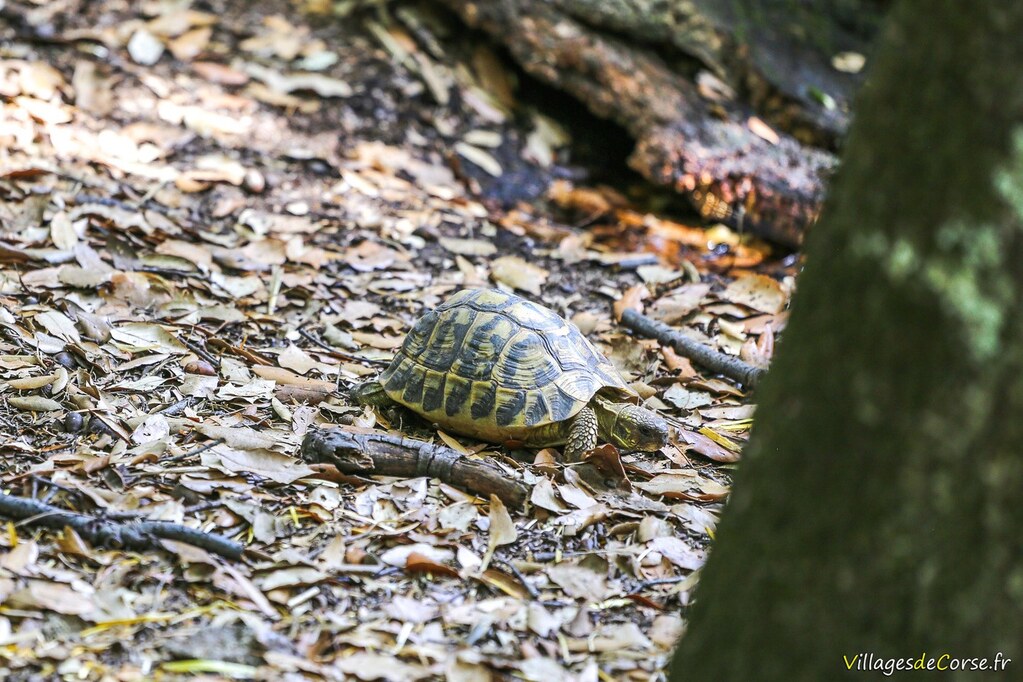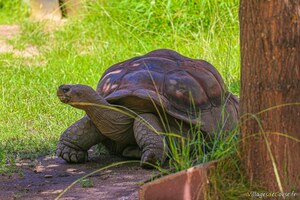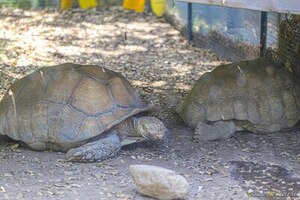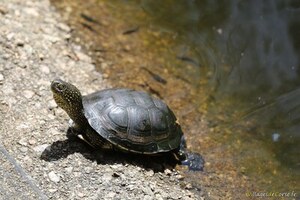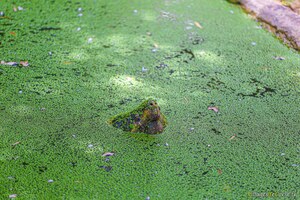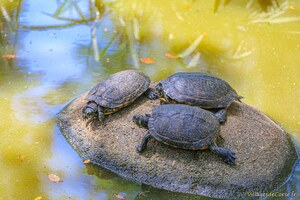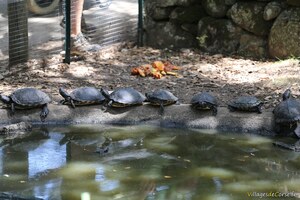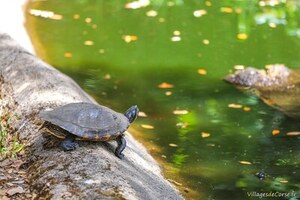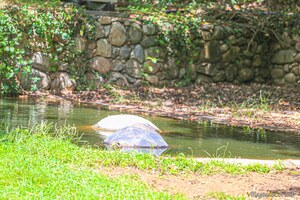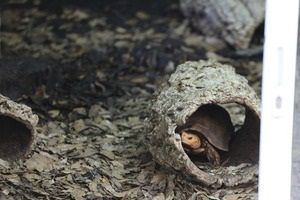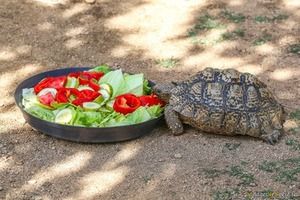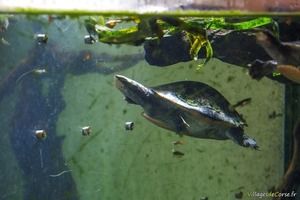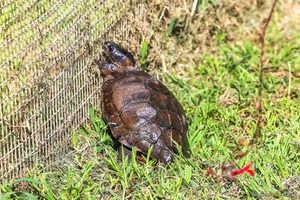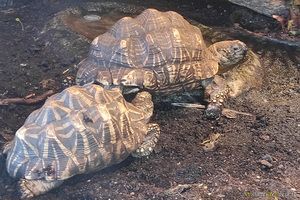- Activities
- Animals
- Zoo
- Tortue d'Hermann
Hermann's Tortoise
Western European Tortoise
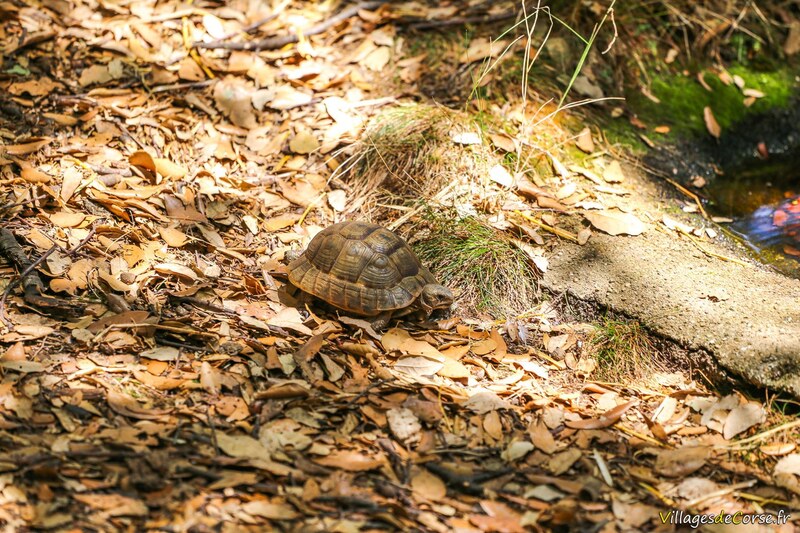
This is the tortoise commonly encountered in the Corsican scrubland (maquis), although they are becoming rarer. Hermann's tortoise is a terrestrial species found in the Mediterranean region and is a protected species.
They can grow up to 20 cm in length for females, with males being slightly smaller.
Characteristics
Diet
Hermann's tortoise primarily feeds on small wild herbs and insects.
Hibernation and Reproduction
Hermann's tortoise hibernates from November to March-April.
Reproduction occurs in the spring. At the beginning of summer, the female lays eggs one to two times, totaling about ten eggs that take three months to hatch. Juvenile tortoises emerge between August and September. In the case of a late summer laying, baby tortoises may remain in their nest over winter and emerge the following spring.
Endangered Species
The population of Hermann's tortoises has declined due to habitat destruction (urban development, fires, deforestation). They are increasingly rare and should not be moved, as these animals are strongly tied to their birthplace—a behavior known as philopatry. Moving them to a different environment can disorient them. Even after a fire, these tortoises instinctively try to return to their birthplace.
Click here to discover and visit the A Cupulatta tortoise park near Ajaccio.
